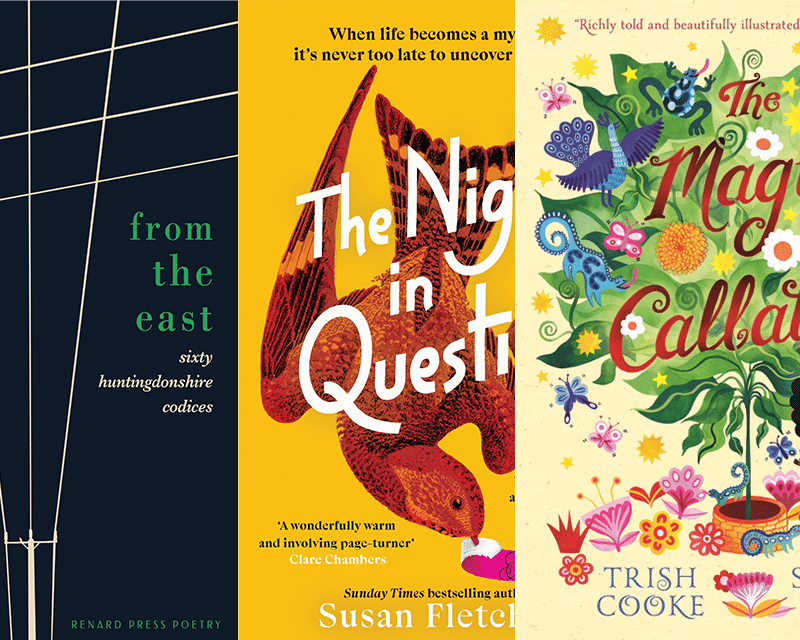- Collected
- Article
Literary Crime
How are social issues presented in crime fiction?

- 5 October, 2020
- Leigh Russell
There is more to many crime fiction novels than a simple murder mystery. One interesting aspect of the genre is the way in which it allows us to explore social issues. Simon Cann, author of the Leathan Wilkey series, describes crime fiction as ‘a lens through which to view society.’ So while the stories in my Geraldine Steel series are traditional police procedurals, the backdrop to each of these murder investigations examines a particular problem in society. The most recent title in the series explores the issue of rough sleepers. By following the story of how one girl becomes homeless and ends up sleeping in a doorway in a snickelway in York, the narrative explores how rough sleepers might come to be living on the street in the first place. It draws the readers’ attention to the adversity and daily dangers rough sleepers face, and their struggle for survival.
Visiting several homeless shelters in the course of my research, I found many of my preconceptions challenged by the actual circumstances experienced by rough sleepers. As one of the shelter managers reminded me, ‘We are all only two payslips away from homelessness.’ This sobering statement was borne out by the experience of people I met in the course of my research. As a rule, the characters in my books are rarely based on real people, but my fictitious former bank manager who lost his job, and consequently his marriage and his home, was based on the experience of a resident of a homeless shelter I visited. The details have been altered, and it may take some of us more than two payslips to slide into homelessness, but the reality is sobering nevertheless. Crime fiction offers no solutions to the difficulties we face, but it can play a role in highlighting challenging questions.
Sadly, a number of people in any society suffer from mental illness. If we are allowed to purchase firearms freely, it follows that many mentally disturbed individuals will have ready access to lethal weapons, while others may be hiding a gun that belongs to someone else. One of the problems with guns is that they make killing physically easy. That is why, in my opinion, guns rarely work in productions of Shakespeare’s Hamlet. To plunge a blade into another human being’s flesh is an immediate act. By contrast, pulling a trigger and shooting someone across a room can feel quite impersonal. So, leaving aside any ethical considerations about murder, shooting to kill is not only swift and reliable, it is also relatively easy. If Hamlet had been holding a gun, would he have agonised over killing his uncle for so long, or would he have simply pulled the trigger from a safe distance?
It seemed implausible for my detective to work in serious crime in North London without ever coming across a gun. Guns, along with knives, are a necessary concern for any crime writer. So the issue of gun crime features in one of my books, even though I was reluctant to write about guns at all. One detail that came up again and again in the course of my research is that most people in possession of firearms are not evil master-criminals. They are far more likely to be dysfunctional or immature: scared gang members, nervous criminals, and children too young to understand the implications of their actions. ‘Traditionally, criminals give guns to junior members of gangs to look after on their behalf so the more senior members of the gang won’t be caught in possession. That’s one way kids end up with guns, simply minding them for somebody else,’ according to an interview on VICE Media with Firearms consultant David Dyson. Between 2013 and January 2016, ‘more than 1,500 children in the UK – some as young as 10 – had been held over alleged firearm offences.’ Given the increase in illegal gun ownership, one of my fictitious police officers advocates arming the police in the UK. My protagonist disagrees, on the basis that this would encourage more criminals to carry guns. ‘They say one in three people in America know someone who’s been shot. It’s like the witch burnings here in the Dark Ages. People are being killed,’ she argues. Readers may agree or disagree with her opinion, but it is an important issue, and should not be ignored.
My debut novel in the series explores problems encountered by a mentally challenged character inadequately supported by an overstretched social service system. ‘Theoretically everyone was accountable but no one was ever held responsible. The social services were doing their best but they could only provide crisis management. When the system failed, there was no one around to pick up the pieces. Sometimes no one noticed the pieces until it was too late.’ As is so often the case in real life, no individual character can be held accountable for what transpires in the pages of my book. Clare Quinlivan at No Exit Press, winner of the CWA’s Best Crime and Mystery Publisher 2019 Award, sums this up when she says, ‘The issue of who is guilty and who is the victim takes on a new dynamic when social issues are incorporated into stories — as suddenly the bad guy isn’t necessarily as evil as people might think but a product of his environment.’ Crime fiction can seek to draw our collective attention to problems in society, even if it offers no solutions.
I am by no means alone in raising these concerns in my books. Many crime writers address social issues. ‘Crime fiction has both mirrored and commented on society’s often tumultuous change,’ Dennis Palumbo wrote. Bill Beverley’s award-winning novel, Dodgers, explores the experience of young black hoodlums in America in a narrative that ‘exposes the real fears and deep sadness of teenagers who grow up in a world of poverty, drugs and violence.’ (The Times.) So crime fiction tells us something about who we are as people, both as individuals in isolation, but also as a society. According to P. D. James, one of the most eminent of recent crime writers, ‘To read the detective novels,’ of Golden Age authors like Agatha Christie, ‘is to learn more about the England in which they lived than most popular social histories can provide.’
Social issues crop up repeatedly in the work of many authors I admire, and several of them call on their own experience in their writing. Peter Murphy spent a number of years in The Hague as defence counsel at the Yugoslavian War Crimes Tribunal, returning to England in 2007 as a judge of the Crown Court. He writes historical novels set between the 1960s and 1980s, but the issues he touches on are as relevant today as they were fifty years ago. His fiction covers a wide range of social issues, from the cover up of child sexual abuse by a religious institution in the 1970s to terrorism. Crime writer Ausma Zehanat Khan says, ‘there’s a seamless fit between writing about crime and writing about social justice issues. The crime novel allows for the unpacking of issues as diverse and compelling as racism, sexism, economic inequality, exploitation, the consequences of family breakdown, mental and physical illness, just to name some.’
At the centre of crime fiction is the conflict between justice and chaos, ‘goodies’ versus ‘baddies’. It offers the reader a moral compass where, ultimately, however tragic the events that take place may be, some kind of resolution is achieved, and order is finally restored. What is interesting is that this operates ‘through the lens of characters who offer a variety of perspectives, leaving readers to make up their own minds,’ according to Ausma Zehanat Khan. To a greater or lesser extent, we all find ways to justify our own actions, and the same is true of many characters in fiction. Ruth Rendell, who created some of the most evil villains in literature, said, ‘I don’t judge people. I don’t think we should.’ So as crime writers we endeavour to imagine the points of view of different characters, including killers, taking account of their social circumstances, and mental state, as well as describing their actions, seeing the world through the ‘lens’ of their eyes.
In common with many others writing in my genre, I look not only at the behaviour of individual characters, but also at society’s problems and how they impact on criminal behaviour and people living on the fringes of society. The context in which people commit crimes is significant, because there is more to crime fiction than whodunnits. The murder investigation unfolds against another equally significant narrative: society itself.
You might also like:
No facts, only versions
Memoirs are as much about what is excluded as what is included. This edition examines how you can evoke the…
RLF Fellows’ News: April 2024
Publishing News RLF Fellow Trish Cooke’s new children’s book, The Magic Callaloo, is set to be published by Walker Books…
Susan Fletcher on outsiders in fiction – literal and imagined
I’ve always known that I’ve preferred to be outside. To be an outsider – literally, and, specifically, amongst wild places…


